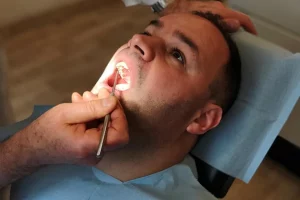Ankyloglossia also referred to as tongue-tie, is a disorder present at birth. It limits the range of motion of the tongue. When a child is affected by tongue tie, the tongue tip is bound to the floor of the mouth by a short, thick, or tight band of tissue known as the lingual frenulum, which may hinder breastfeeding. A person with a tongue tie could find it challenging to thrust out their tongue. In addition, tongue-tie may impact a child’s ability to communicate, swallow, and eat. Usually, tongue tie is not a problem and might only need a quick surgical correction.
What are the symptoms of tongue tie?
Here are some of the symptoms of tongue tie:
● Difficulty moving the tongue from side to side or elevating it to the upper teeth
● Having difficulty extending the tongue past the lower front teeth
A tongue that protrudes with a heart-shaped or notched appearance
What are the causes?
The lingual frenulum typically separates before birth, giving the tongue unrestricted motility. The lingual frenulum stays affixed to the base of the tongue in tongue-tie. Although some occurrences of tongue tie have been linked to specific hereditary variables, the exact cause of this condition is still mostly unknown.
Are there any associated risk factors?
Although tongue-tie can afflict anyone, males are more likely than females to experience it. Sometimes tongue-tie runs in families.
When to visit a doctor?
You should consult a doctor in case:
● Your infant exhibits tongue-tie symptoms that are problematic, such as difficulty in breastfeeding
● Your child’s tongue tie may be affecting their speech, as per examination from a speech-language pathologist
● Your older child complains of tongue issues that make it difficult for them to eat, speak, or reach their rear teeth.
● You’re troubled by your own tongue-tie problems.





